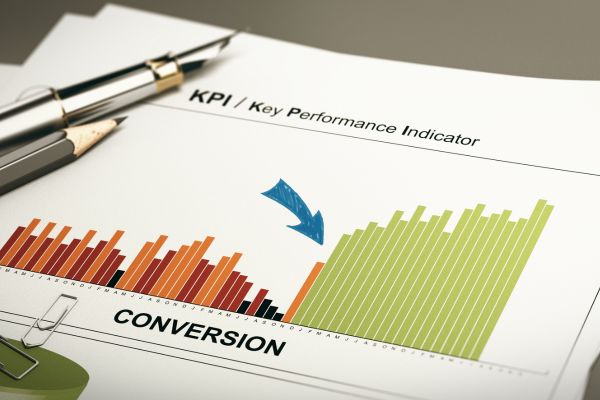Improving your website’s conversion rate is one of the most impactful ways to grow your business. It involves turning visitors into customers through effective design, communication, and user experience strategies. This article outlines actionable steps to optimize your site, ensuring better engagement and higher conversion rates.
1. Clarify and Highlight Your Value Proposition
Your value proposition is the first thing visitors see—it’s what tells them why they should choose you over competitors. Crafting a clear and compelling value proposition ensures visitors quickly understand your unique offering.
Action Items:
- Craft a Clear Statement: Summarize your unique selling points in one sentence.
- Position Above the Fold: Ensure your value proposition is visible without scrolling.
- Tailor to Each Page: Adjust messaging for individual landing pages to reflect specific offerings.
Example:
A language learning platform might state, “The fun and effective way to learn a new language for free!” prominently at the top of their homepage.
2. Enhance Content Readability
Complicated language and long paragraphs discourage engagement. Visitors are more likely to take action when content is accessible and easy to follow.
Action Items:
- Avoid Jargon: Stick to simple, clear language.
- Use Short Sentences: Make content digestible by breaking up complex ideas.
- Adopt a Conversational Tone: Speak directly to your audience to build trust.
Tool Tip:
Use readability analysis tools like Hemingway or Grammarly to improve clarity.
3. Build Trust with Social Proof
Demonstrating that others trust your business builds credibility and encourages potential customers to convert.
Action Items:
- Showcase Testimonials: Highlight positive customer feedback.
- Display Client Logos: Feature well-known brands you’ve worked with.
- Share User Numbers: Provide metrics like the size of your customer base.
- Add Trust Badges: Use security seals and certifications to instill confidence.
Example:
A SaaS provider might display a banner reading, “Trusted by over 10,000 businesses worldwide.”
4. Simplify Conversion Forms
A lengthy or complex form can discourage users from completing it. Keep forms straightforward to encourage sign-ups or purchases.
Action Items:
- Minimize Fields: Ask for only essential information.
- Provide Clear Instructions: Ensure users understand what’s required for each field.
- Use Progress Indicators: For multi-step forms, show users how far along they are.
Example:
A webinar registration form that asks only for name and email will see higher completion rates than one requiring phone numbers and job titles.
5. Optimize Call-to-Action (CTA) Buttons
CTAs are pivotal in guiding visitors toward desired actions. An effective CTA button is visible, actionable, and persuasive.
Action Items:
- Use Actionable Text: Include verbs that encourage immediate action, like “Download Now” or “Get Started.”
- Ensure Visibility: Use contrasting colors and strategic placement.
- Create Urgency: Add phrases like “Limited Time Offer” to push quicker decisions.
6. Improve Page Load Speed
Slow websites drive users away. Optimizing load times keeps visitors engaged and reduces bounce rates.
Action Items:
- Compress Images: Reduce file sizes without losing quality.
- Enable Browser Caching: Speed up repeat visits.
- Minimize HTTP Requests: Reduce the number of elements that need loading.
Tool Tip:
Use tools like Google PageSpeed Insights to measure and improve your website’s performance.
7. Implement A/B Testing
Data-driven decisions improve website performance. A/B testing allows you to test elements like headlines, colors, and CTAs to see what resonates with your audience.
Action Items:
- Choose Key Variables: Focus on one element at a time to test, such as a headline or button text.
- Run Simultaneous Tests: Ensure both versions are tested under the same conditions.
- Measure Results: Use conversion metrics to determine success.
8. Ensure Mobile Responsiveness
More users browse and shop on mobile devices than ever before. A mobile-optimized site ensures a seamless user experience.
Action Items:
- Adopt Mobile-First Design: Prioritize mobile layout before desktop.
- Test Across Devices: Verify functionality on different screen sizes.
- Optimize Touch Elements: Use large buttons and easy-to-tap links.
9. Utilize Analytics to Monitor Performance
Understanding user behavior helps identify bottlenecks and opportunities for improvement.
Action Items:
- Set Up Conversion Tracking: Use tools like Google Analytics to monitor specific actions.
- Analyze User Flow: Understand where visitors drop off during their journey.
- Make Data-Driven Adjustments: Use insights to refine strategies.
10. Offer Live Chat Support
Immediate assistance can resolve doubts or questions, increasing the likelihood of conversions.
Action Items:
- Implement Live Chat Tools: Add a chat widget to your website.
- Train Support Staff: Ensure quick, knowledgeable responses.
- Use Chatbots for FAQs: Automate basic queries for efficiency.
Conclusion
Improving your website’s conversion rate requires a combination of clarity, trust, and user-focused design. By implementing these strategies—ranging from simplifying forms to leveraging social proof—you can create a seamless experience that turns visitors into loyal customers.
Start small by focusing on one or two areas, such as optimizing CTAs or clarifying your value proposition, and measure the impact. Over time, these improvements can lead to significant gains in engagement and revenue.
Take action today and watch your conversion rates soar!



